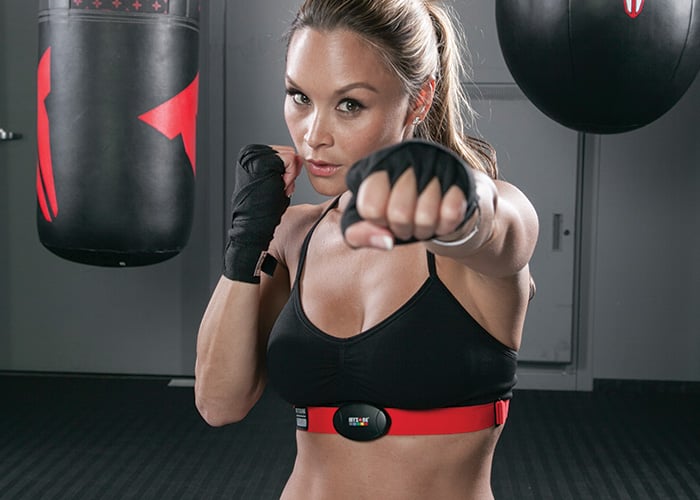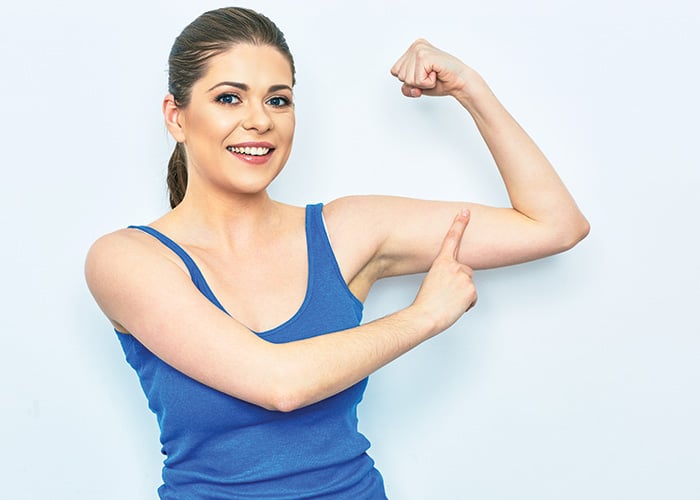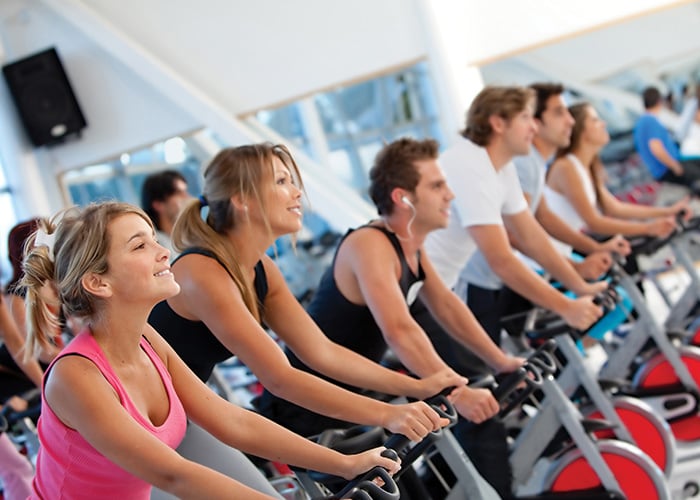Why use heart rate to measure caloric expenditure?
When you use a group heart rate tracking device or a piece of equipment at the gym, how does it know how many calories you’ve burned? Well, determining caloric expenditure is an interesting and complex science.
One of the most accurate laboratory techniques for measuring caloric expenditure is to perform cardiorespiratory exercise while wearing a face mask connected to a metabolic measurement system that analyzes gas exchange. Of course, the number of calories expended differs based on the intensity of your exercise and the type of exercise you do, so this technique is not a one-size-fits-all solution to every move you perform. Furthermore, it is most often used in laboratory research, so it probably isn’t a realistic option for most exercisers.

Treadmills, stationary bikes, ellipticals, and motion sensors (such as pedometers and accelerometers) use preprogrammed algorithms to estimate caloric expenditure. The equations used may include such factors as your weight and age, as well as how fast you are walking, running, or pedaling. The number of calories you see on each piece of equipment is an estimate of the average amount of calories expended by a sample population from previous research.
But what if you don’t resemble that sample population? Or what if you’re exercising at a different intensity than that sample population? The amount of calories you burn during a workout is affected by many factors, including your body dimensions, your age, your fitness level, and your body composition (how much of your body is fat and how much is muscle). Since your gym equipment cannot actually tell what’s happening inside your body, you probably aren’t getting a very accurate estimate of caloric expenditure.
Numerous studies have demonstrated that the more information an equation has about you, the more accurate it is. This is where heart rate monitors come into play.
Heart rate is closely associated with the gas exchange that we mentioned earlier, meaning that it can be a strong predictor of caloric expenditure during cardiorespiratory exercise. Heart rate tends to reflect changes in exercise intensity and thus, changes in caloric needs, meaning that we can estimate how many calories you’re using during your move.

The more specific information your group heart rate tracking devices have about you, the better. That is why the MYZONE system considers your gender, age, weight, and heart rate when it calculates your caloric expenditure.
As with most measures of physiological processes, heart rate can be a flawed measurement system. It can be affected by environmental factors, normal day-to-day variability, the type of move performed, the intensity of exercise, and more. That said, it has time and time again been shown to be one of the more accurate methods of determining caloric expenditure.
Monitor your average caloric expenditure using the MYZONE system. When you complete a move, post it to Facebook, Instagram and Twitter using the hashtags: #myzonemoves and #effortrewarded.
Keep moving forward!
Share this
You May Also Like
These Related Stories

Improve Your Self-Esteem with Exercise

Your Heart – The Most Important Muscle of All



